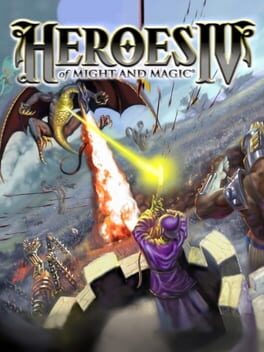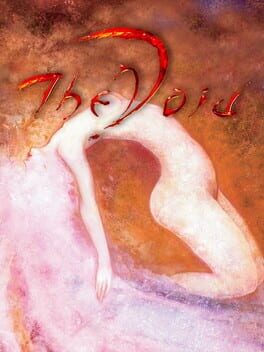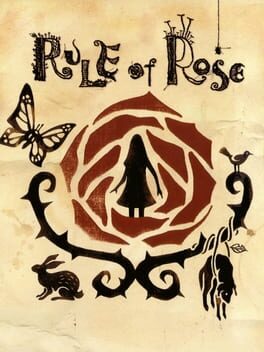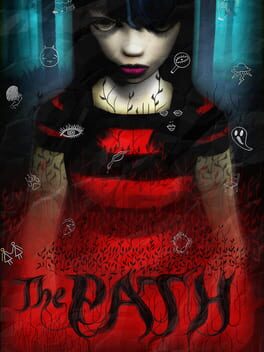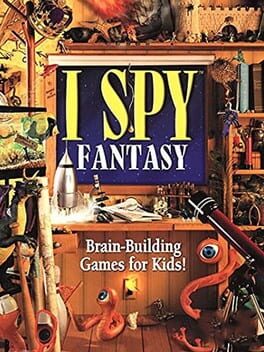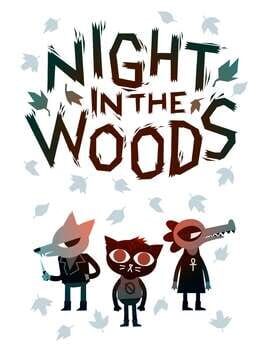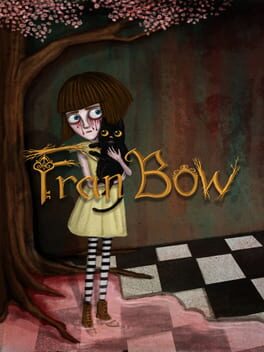Bio
Reviews to books and movies in my linktree
Reviews to books and movies in my linktree
Badges

Busy Day
Journaled 5+ games in a single day

N00b
Played 100+ games

Listed
Created 10+ public lists

GOTY '23
Participated in the 2023 Game of the Year Event
Favorite Games
113
Total Games Played
013
Played in 2024
012
Games Backloggd
Recently Played See More
Recently Reviewed See More
I find it deeply ironic how Salt & Sanctuary takes so much inspiration from dungeon synth and black metal aesthetics because of how I treat these genres. On one hand, it looks and sounds like a world from which I came into this nonsense and now all I'm doing is desperately missing it, but on another? It's all the same messy soundscapes where I can't tell one track from another and one artist from another. All originality of your average black metal album cover, but maybe you love these covers as much as I do?
As a game, it only made me think that there can really only be one Dark Souls, and even that's more than enough -- and the novelty of 2D only downplays the best parts about it. Maybe my motor awareness is just this weak, but I could never understand how rolling past bosses works, as well as what's with these iframes and collision boxes -- it's anything but intuitive. Maybe, this is why all the bosses felt either like one trick pushovers or RNG abuse moments for me. Now, my spatial awareness is objectively better, but here, the map feels unreasonably vast and convoluted -- and, paradoxically, it being 2D makes it harder to memorise (unlike DS1 or Bloodborne where I can draw maps of almost any location from the top of my head). Most of the time shortcuts don't work as intended because you don't even understand or need those places you're brought to, since the Guides are so abundant that warping is essentially no problem here. I even wonder, why not make warping an option if you're going to put separate Guide statues lying on the ground right outside the sanctuaries anyway?
I don't want to be way too demanding with a game made essentially by two people, but the thought-out design is another core point of a soulslike -- these games need resources. The level of production is already outstanding for two people, but I couldn't see consistent calculation in what the game was trying to give me. The way too uneven bosses, the route to the final boss which unironically made me learn how to cheat in games -- these are still flaws in the game, which is already heavily compromised with taking this many inspiration from Dark Souls. (Although -- why not? S&S has enough of its own, and if Siam Lake looks just a bit too much like Ash Lake, how come then Ash Lake was already in Nausicaa? And I won't even begin with Berserk.)
What I'm trying to say is that when you arrive from the Undead Parrish to the Firelink Shrine via some unassuming elevator, it does work, but it only works once. A lot of such traditions we now consider essential parts of a soulslike don't really hold that well -- and S&S has an excuse, being one of the oldest in the genre. The tradition of random, easily missable character quests, dare I say, has already been obsolete in DS1 and had to go, but back then, at least it was a novelty. All of these tiresome devices of shredding the story into small, immemorable occasions -- seeing them the first time is novel, but everyone's going to google everything anyway. Maybe it works for keeping the community alive, and maybe it justifies the dried-out experience every story becomes when made into a soulslike, but the more of these artful, atmospheric worlds turn into a mish-mash of evil bosses and nonchalant dudes scattered throughout the map, the sadder it makes me personally.
But maybe, sparseness and wicked cosiness are much less out of place in this particular story than I imagine them to be, after all. Because in its own way, S&S is very cosy indeed -- apart from being so well-known in its mechanics and purpose right from the start, it also has one of the cosiest hub soundtracks I've heard, and besides, even The Lighthouse (2018) or The Terror (2018) or Edgar Poe's stories aren't without their comfortable moments as well. Even if the powers of nature are so vile, and men can be so cruel, it shouldn't be like this all the time. And the "sanctuary" part here is quite stressed -- you have to rely on other lost sailors to navigate, get equipped, or learn. Even if they don't share your beliefs, there are only so many of you on this island, and someone has to make a weapon to kill a god, or bake bread.
And the ethereal loneliness is another strength of the game. It's very deprived of colours or clarity, here, you can't clearly see the environment, the characters, or even their faces. It's like Ligotti's stories or the works of Alfred Kubin: the lack of data is another factor of the uncanny on its own. These Gothic visuals, eaten by the post-processing as if by salt, are very successful when you pass through narrow cave corridors, lonely shores, or rotting woods. Together with grungy background tracks, the visual design captures the liminality and otherworldliness even better than the newer Fromsoftware games, cluttered with assets and looking a bit like dollhouses at times. The game doesn't even have a certain hub, where you could feel somewhat homely for a moment.
Ironically, it also echoes the black metal subculture conceptually, apart from the clear visual references. Albeit morbid, black metal offers its own kind of brotherhood and enlightenment, an alternative answer. An inversion of what doesn't work for everyone (speaking of inversion, I could really use more upside-down sections on the levels, they look so cool and are so confusing). That's why, flawed and clearly derivative, S&S certainly has its own purpose of existence. Say, for me, the unique grotesque ghostliness of this piece is certainly dearer than the polished Hollow Knight, the vivid Blasphemous, or even the exquisite Ender Lilies. Probably, this is why I'd be so eager to have a normal story delivered about this world.
As a game, it only made me think that there can really only be one Dark Souls, and even that's more than enough -- and the novelty of 2D only downplays the best parts about it. Maybe my motor awareness is just this weak, but I could never understand how rolling past bosses works, as well as what's with these iframes and collision boxes -- it's anything but intuitive. Maybe, this is why all the bosses felt either like one trick pushovers or RNG abuse moments for me. Now, my spatial awareness is objectively better, but here, the map feels unreasonably vast and convoluted -- and, paradoxically, it being 2D makes it harder to memorise (unlike DS1 or Bloodborne where I can draw maps of almost any location from the top of my head). Most of the time shortcuts don't work as intended because you don't even understand or need those places you're brought to, since the Guides are so abundant that warping is essentially no problem here. I even wonder, why not make warping an option if you're going to put separate Guide statues lying on the ground right outside the sanctuaries anyway?
I don't want to be way too demanding with a game made essentially by two people, but the thought-out design is another core point of a soulslike -- these games need resources. The level of production is already outstanding for two people, but I couldn't see consistent calculation in what the game was trying to give me. The way too uneven bosses, the route to the final boss which unironically made me learn how to cheat in games -- these are still flaws in the game, which is already heavily compromised with taking this many inspiration from Dark Souls. (Although -- why not? S&S has enough of its own, and if Siam Lake looks just a bit too much like Ash Lake, how come then Ash Lake was already in Nausicaa? And I won't even begin with Berserk.)
What I'm trying to say is that when you arrive from the Undead Parrish to the Firelink Shrine via some unassuming elevator, it does work, but it only works once. A lot of such traditions we now consider essential parts of a soulslike don't really hold that well -- and S&S has an excuse, being one of the oldest in the genre. The tradition of random, easily missable character quests, dare I say, has already been obsolete in DS1 and had to go, but back then, at least it was a novelty. All of these tiresome devices of shredding the story into small, immemorable occasions -- seeing them the first time is novel, but everyone's going to google everything anyway. Maybe it works for keeping the community alive, and maybe it justifies the dried-out experience every story becomes when made into a soulslike, but the more of these artful, atmospheric worlds turn into a mish-mash of evil bosses and nonchalant dudes scattered throughout the map, the sadder it makes me personally.
But maybe, sparseness and wicked cosiness are much less out of place in this particular story than I imagine them to be, after all. Because in its own way, S&S is very cosy indeed -- apart from being so well-known in its mechanics and purpose right from the start, it also has one of the cosiest hub soundtracks I've heard, and besides, even The Lighthouse (2018) or The Terror (2018) or Edgar Poe's stories aren't without their comfortable moments as well. Even if the powers of nature are so vile, and men can be so cruel, it shouldn't be like this all the time. And the "sanctuary" part here is quite stressed -- you have to rely on other lost sailors to navigate, get equipped, or learn. Even if they don't share your beliefs, there are only so many of you on this island, and someone has to make a weapon to kill a god, or bake bread.
And the ethereal loneliness is another strength of the game. It's very deprived of colours or clarity, here, you can't clearly see the environment, the characters, or even their faces. It's like Ligotti's stories or the works of Alfred Kubin: the lack of data is another factor of the uncanny on its own. These Gothic visuals, eaten by the post-processing as if by salt, are very successful when you pass through narrow cave corridors, lonely shores, or rotting woods. Together with grungy background tracks, the visual design captures the liminality and otherworldliness even better than the newer Fromsoftware games, cluttered with assets and looking a bit like dollhouses at times. The game doesn't even have a certain hub, where you could feel somewhat homely for a moment.
Ironically, it also echoes the black metal subculture conceptually, apart from the clear visual references. Albeit morbid, black metal offers its own kind of brotherhood and enlightenment, an alternative answer. An inversion of what doesn't work for everyone (speaking of inversion, I could really use more upside-down sections on the levels, they look so cool and are so confusing). That's why, flawed and clearly derivative, S&S certainly has its own purpose of existence. Say, for me, the unique grotesque ghostliness of this piece is certainly dearer than the polished Hollow Knight, the vivid Blasphemous, or even the exquisite Ender Lilies. Probably, this is why I'd be so eager to have a normal story delivered about this world.
I'll put it this way; a heavy dose of coral-tinted hauntology and a retelling of Clarice Lispector for young adults who haven't yet googled Mark Fisher is what I always appreciate but it wasn't what I expected to see, since I just knew this was a game about building relationships with animals drawn in vector graphics. But eventually it... turned out to be a better abstract horror story than those of Nick Land, the author of the term? Actually, there's a whole list of things this game was better than something personally for me.
It did a better portrayal of bonding through disenchantment in modern America for me than Generation X by Douglas Coupland. It seems there is a certain tradition in the American media to show the most interesting things in the world through the eyes of complete idiots. Holden Caulfield, or the snobby rigid busybodies from Generation X, or those parts of On the Road I've made it through, or a teenage cat who thinks her life is a 2010s webcomic and is friends with a bipolar fox and they ramble like your classmates in Discord the whole goddamn time, geez dude -- they are a challenge to sympathize with, although the less smug one is in a priority for me, and Mae is the less smug one. But everything they all see around them is thrilling. Despite having never been to America, I can never have enough of these stories about ghost towns and lost futures, and guess what? This game is also better than Twin Peaks at being about the wyrdness of the rural USA (Lynch can do camp, but in this particular title it's so forced I feel suffocated) and it's also substantially, substantially better at being about people than whatever the hell the authors of Life is Strange think people and psychology and the world are (my personal lost future is of those hours I've spent on watching let's plays of Before the Storm and the LiS2 — can't refund time).
Finally, it did a better job at being an eerie/weird/Gothic/etc etc story about dying places and absences and ecology and moving backwards (here, you move to the left all the time and I love it) for me than Disco Elysium no less. I think it has to do with the degree of the estrangement. They handle the same topics here — ghosts of the society and despising vile conservatives and making you think about the working class. Still, in one case you observe the story through the eyes of delinquent teenagers who, after listening to adults' stories about their life and town, barely think anything more than "damn dude acab, geez", and in another case, you play as an ageing alcoholic who exchanges millions of words with other ageing alcoholics... and these words tell everything. Every character, including the voices in your head, has a position and a moral to derive and a theory to support it and they will momentarily deliver it to you the wordiest way possible.
Now, DE does have good writing, and its catchphrases are on top, but where do you have more to figure out for yourself? Sometimes, emptiness is a tool, because it becomes your job to fulfil it. Another story about the American ghost towns, the movie Virgin Suicides, handles emptiness like no one else — no interpretations given, only the consequences. Go figure.
(Or maybe I'm being like this purely because Kim is so much worse than Mae. I can handle her being my player character but not him being shoved down my throat by both the narrative and the fandom. Being insufferable is an art, and everyone does it their own way.)
Dreams are the worst though. Could she hurry just a bit? And what's with the band? They could've at least kicked me out for not having any reaction whatsoever and gaining no pleasure from the mini-game, and that'd be a relief. Buuut I will not let my personal disdain for the annoying dialogues and the way too clean graphics affect the ultimate rating. After all, the tabula rasa, the openness, the void, the blank shapes -- all of them can be tools, and here, they are being put to good use.
It did a better portrayal of bonding through disenchantment in modern America for me than Generation X by Douglas Coupland. It seems there is a certain tradition in the American media to show the most interesting things in the world through the eyes of complete idiots. Holden Caulfield, or the snobby rigid busybodies from Generation X, or those parts of On the Road I've made it through, or a teenage cat who thinks her life is a 2010s webcomic and is friends with a bipolar fox and they ramble like your classmates in Discord the whole goddamn time, geez dude -- they are a challenge to sympathize with, although the less smug one is in a priority for me, and Mae is the less smug one. But everything they all see around them is thrilling. Despite having never been to America, I can never have enough of these stories about ghost towns and lost futures, and guess what? This game is also better than Twin Peaks at being about the wyrdness of the rural USA (Lynch can do camp, but in this particular title it's so forced I feel suffocated) and it's also substantially, substantially better at being about people than whatever the hell the authors of Life is Strange think people and psychology and the world are (my personal lost future is of those hours I've spent on watching let's plays of Before the Storm and the LiS2 — can't refund time).
Finally, it did a better job at being an eerie/weird/Gothic/etc etc story about dying places and absences and ecology and moving backwards (here, you move to the left all the time and I love it) for me than Disco Elysium no less. I think it has to do with the degree of the estrangement. They handle the same topics here — ghosts of the society and despising vile conservatives and making you think about the working class. Still, in one case you observe the story through the eyes of delinquent teenagers who, after listening to adults' stories about their life and town, barely think anything more than "damn dude acab, geez", and in another case, you play as an ageing alcoholic who exchanges millions of words with other ageing alcoholics... and these words tell everything. Every character, including the voices in your head, has a position and a moral to derive and a theory to support it and they will momentarily deliver it to you the wordiest way possible.
Now, DE does have good writing, and its catchphrases are on top, but where do you have more to figure out for yourself? Sometimes, emptiness is a tool, because it becomes your job to fulfil it. Another story about the American ghost towns, the movie Virgin Suicides, handles emptiness like no one else — no interpretations given, only the consequences. Go figure.
(Or maybe I'm being like this purely because Kim is so much worse than Mae. I can handle her being my player character but not him being shoved down my throat by both the narrative and the fandom. Being insufferable is an art, and everyone does it their own way.)
Dreams are the worst though. Could she hurry just a bit? And what's with the band? They could've at least kicked me out for not having any reaction whatsoever and gaining no pleasure from the mini-game, and that'd be a relief. Buuut I will not let my personal disdain for the annoying dialogues and the way too clean graphics affect the ultimate rating. After all, the tabula rasa, the openness, the void, the blank shapes -- all of them can be tools, and here, they are being put to good use.
While recognizing the artistic qualities of Fran Bow, I strongly suspect that a significant part of its popularity is caused by its timing. It caught the last train of that trend in the earlier 10's when the first little children who grew up with gadgets found a taste for horror. Why tell creepy stories to each other before bedtime, if you can google interactable ones? Knock-Knock, Sally Face, Five Nights at Freddy's — all of these titles are both creepy and conventionally cute. You can enjoy watching a funny little girl overcoming obstacles just as well as the cutest demon ever killing her parents and everyone she loves. There is an inherent drive to dark stories in children and younger teenagers, so it's no wonder these tales gather such massive fandoms.
But at the same time, Fran Bow is surprisingly, absurdly strong at storytelling. No comparison to Jeff the Killer creepypasta or the vague premise of Slenderman whatsoever. This twisted way of being family-friendly, both engaging and relatable (to some extent) for younger audiences and interesting for adults to think about, this level of keeping the mystery, evading the answers, provoking wild theories and consciously gaslighting the player, was only ever reached by Rule of Rose, from what I've seen (only here the artist was given more than two crayons, brown and green. And red crayons were in abundance). The narrative is calculated and directed very meticulously, and the kitty jumping into the window only to never come back is almost as touching as Betty disappearing from the camera view for good right before Rita opens the blue box in Mulholland Drive (but more, because it's a kitty).
In fact, trying to answer the question "What is real?" is so hard here that you can't help thinking about our usual manner of interpreting psychological horror. "What did this symbol mean for the plot? Wasn't that occasionally a manifestation of the subdued desires and fears of the protagonist? Also, do you realize why the Yume Nikki girl sits in her room and sees creatures of prolonged shapes? What has happened in reality?" — in which one? Silent Hill kinda did a self-ironic secret "dog's dream" ending, but Fran Bow is much more complex in this. Good luck trying to tell when the pills show us the "reality" and when "illness" (and what was even that swapping subplot), what is the ontological status of a kitty in which moment, who and how has killed the parents and why does this little British (American? German?) girl dream of Indian gods, Escher and Finnish dictionary. Ideas grow from each other in your eyes, and that's actually quite logical that the game's iconography is so based on arboreal imagery; it's lively and vibrant roots, berries and leaves that make Fran Bow's promo materials stand out visually among all kinds of modern cruel tales in games; little girls, black cats, keys of all shapes and insects are used much more widely. The game itself actively grows and branches out during the playthrough, and there are less than two hours between the yellow walls of the ward and the eight realities whose names sound like Finnish mythology (but only if you, unlike me, were quick enough to trick the receptionist).
This biological analogy, totally appropriate for a game about mental health, seems very curious to me regarding the whole New Weird's obsession with new worlds, the role of a human in them, the magic of physics, cacti people, and the boundaries between gothic — the fear of the past and the surreal — and weird — the fear of the way-too-real but not yet experienced. Speaking of: Fran Bow actually manages to turn Lovecraft inside out along the way. Yeah, new worlds might be weird, but are you sure that the unknown inhumane, say, the world of insects or living eyes, will be unbearably bad for us and the Frenzy bar will kill us? With its Eastern inspirations, Fran Bow might be a world game in the same sense in which Enigma is world music, which I think is very fitting for a game made by a couple of mixed Swedish-Latin American origins (hope I wasn't wrong here, but I know for sure Little Misfortune is Latina). The mechanic of seeing multiple worlds in one location highlights this message beautifully: between different experiences, there must be a language, be they caused by different origins or different mental composition (Laing's argument for working out a unique language to talk to a mental patient and understand them is basically what the player is constantly motivated to do here).
Or actually even different age. As an older brother, I know two things perfectly: despite the game only being allowed for teenagers and older, it's not that twelve-year-old fans of Jeff the Killer don't know who Fran Bow is, as well as dozens of other horror titles, and it's not that Fran Bow is the most traumatic media they've most probably seen. It doesn't mean every child should immediately be introduced to Fran seeing her dead parents and cutting the beetlepig in half, but it's a perfect modern adaptation for something like The NeverEnding Story and the whole category of fantasy films about clever kids in a scary world (and it's unironically better and more wholesome than Time Bandits, for what it's worth). The way the characters aren't voiced (it's obviously for financial reasons but still) even reminded me of how I've read something about Dickens and his theatrical dialogues; they work the best if read by roles by the whole family. And Fran Bow is that as well! (One tough test for a let's player, I can say that). In our times, the world is scarier but also more open.
But at the same time, Fran Bow is surprisingly, absurdly strong at storytelling. No comparison to Jeff the Killer creepypasta or the vague premise of Slenderman whatsoever. This twisted way of being family-friendly, both engaging and relatable (to some extent) for younger audiences and interesting for adults to think about, this level of keeping the mystery, evading the answers, provoking wild theories and consciously gaslighting the player, was only ever reached by Rule of Rose, from what I've seen (only here the artist was given more than two crayons, brown and green. And red crayons were in abundance). The narrative is calculated and directed very meticulously, and the kitty jumping into the window only to never come back is almost as touching as Betty disappearing from the camera view for good right before Rita opens the blue box in Mulholland Drive (but more, because it's a kitty).
In fact, trying to answer the question "What is real?" is so hard here that you can't help thinking about our usual manner of interpreting psychological horror. "What did this symbol mean for the plot? Wasn't that occasionally a manifestation of the subdued desires and fears of the protagonist? Also, do you realize why the Yume Nikki girl sits in her room and sees creatures of prolonged shapes? What has happened in reality?" — in which one? Silent Hill kinda did a self-ironic secret "dog's dream" ending, but Fran Bow is much more complex in this. Good luck trying to tell when the pills show us the "reality" and when "illness" (and what was even that swapping subplot), what is the ontological status of a kitty in which moment, who and how has killed the parents and why does this little British (American? German?) girl dream of Indian gods, Escher and Finnish dictionary. Ideas grow from each other in your eyes, and that's actually quite logical that the game's iconography is so based on arboreal imagery; it's lively and vibrant roots, berries and leaves that make Fran Bow's promo materials stand out visually among all kinds of modern cruel tales in games; little girls, black cats, keys of all shapes and insects are used much more widely. The game itself actively grows and branches out during the playthrough, and there are less than two hours between the yellow walls of the ward and the eight realities whose names sound like Finnish mythology (but only if you, unlike me, were quick enough to trick the receptionist).
This biological analogy, totally appropriate for a game about mental health, seems very curious to me regarding the whole New Weird's obsession with new worlds, the role of a human in them, the magic of physics, cacti people, and the boundaries between gothic — the fear of the past and the surreal — and weird — the fear of the way-too-real but not yet experienced. Speaking of: Fran Bow actually manages to turn Lovecraft inside out along the way. Yeah, new worlds might be weird, but are you sure that the unknown inhumane, say, the world of insects or living eyes, will be unbearably bad for us and the Frenzy bar will kill us? With its Eastern inspirations, Fran Bow might be a world game in the same sense in which Enigma is world music, which I think is very fitting for a game made by a couple of mixed Swedish-Latin American origins (hope I wasn't wrong here, but I know for sure Little Misfortune is Latina). The mechanic of seeing multiple worlds in one location highlights this message beautifully: between different experiences, there must be a language, be they caused by different origins or different mental composition (Laing's argument for working out a unique language to talk to a mental patient and understand them is basically what the player is constantly motivated to do here).
Or actually even different age. As an older brother, I know two things perfectly: despite the game only being allowed for teenagers and older, it's not that twelve-year-old fans of Jeff the Killer don't know who Fran Bow is, as well as dozens of other horror titles, and it's not that Fran Bow is the most traumatic media they've most probably seen. It doesn't mean every child should immediately be introduced to Fran seeing her dead parents and cutting the beetlepig in half, but it's a perfect modern adaptation for something like The NeverEnding Story and the whole category of fantasy films about clever kids in a scary world (and it's unironically better and more wholesome than Time Bandits, for what it's worth). The way the characters aren't voiced (it's obviously for financial reasons but still) even reminded me of how I've read something about Dickens and his theatrical dialogues; they work the best if read by roles by the whole family. And Fran Bow is that as well! (One tough test for a let's player, I can say that). In our times, the world is scarier but also more open.
